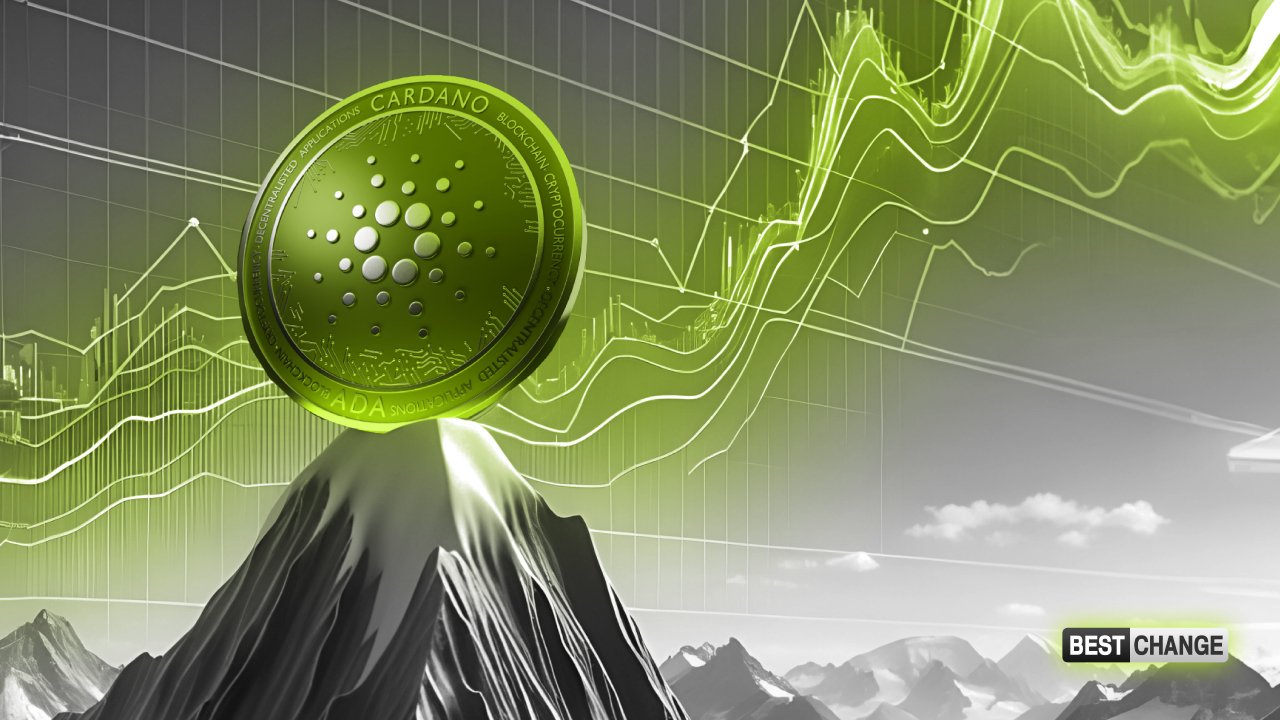5 steps to decentralization and scalability: how the Cardano (ADA) ecosystem has evolved

Major blockchains such as Solana, Cardano, BNB Chain and Tron are competing to be one of the leading decentralized platforms in DeFi alongside Ethereum. Cardano stands out from other projects because new features are introduced into its protocol gradually after lengthy research and testing.
Stages of Cardano's formation
The project was founded in 2015 led by Charles Hoskinson, one of the co-founders of the leading Ethereum blockchain based on smart contract technology. Cardano was originally a research project to explore blockchain technology and its applicability in real life. A team of mathematics and other science experts researched decentralized technology to improve it and create the most advanced blockchain ecosystem available.
Cardano brings together three organizations, each with a different function:
- Cardano Foundation — a foundation to support research and development of the network;
- IOHK — a company that works in conjunction with several universities on research and development;
- Emurgo is an independent company contracted to work on the blockchain to make it attractive to businesses.
Cardano's development history is divided into 4 phases without considering the future update of Voltaire, named after the French philosopher François Marie Arouet Voltaire.
Byron Era (2017 — 2020) or Foundation Era
Cardano's Proof-of-Stake (PoS) consensus-based blockchain was launched on 29 September 2017 and only supported the ADA cryptocurrency-sending function, much like the Bitcoin blockchain. It was the first era of the Cardano network called Byron, and it did not yet have smart contracts and features such as staking.
The protocol is developed based on the proprietary Ouroboros BFT consensus algorithm and in a custom-built Haskell programming language. The Ouroboros algorithm secures the network, verifies transactions, and generates new ADA units. The algorithm divides transactions into epochs and forms slots out of them. Each slot is assigned a validator-leader responsible for adding a unit to Cardano's decentralized network.
Shelley Era or Decentralised Era (2020 — 2021)
The second phase of Cardano's maturation was the Shelley era, launched in July 2020, which introduced a steaking mechanism and allowed for revenue generation for ADA cryptocurrency holders and staking pool holders. Also, the Allegra update, part of the Shelley era, added a token blockchain feature that allowed agreements between two parties and enabled the voting system on the Cardano blockchain.
The next update Mary, launched in March 2021, provided support for multiple tokens on the Cardano network and the ability for any users to issue their tokens and make transactions with them. After Mary's launch, the creation of both fungible (FT) and non-fungible (NFT) tokens became available.
Goguen or Smart Contract Era (2021 — present)
The Goguen update aimed to make the Cardano blockchain platform more scalable, functional, secure, versatile, and attractive to companies and developers.
In September 2021, the first update within Goguen, called Alonzo, was launched, enabling the creation of functional smart contracts based on the Cardano blockchain and, as a result, decentralized applications (DApps) for the DeFi ecosystem. Alonzo also implemented an enhanced EUTXO address accounting model compared to Bitcoin.
Another update from the Goguen era is Vasil, which launched in June 2022 and was named after Bulgarian mathematician Vasil Dabov, who was part of the Cardano community. In the Vasil update, developers have included five fundamental mechanisms to simplify the development of DApps and increase scalability by increasing block size.
Basho or Scaling Era (2022 — present)
Basho was the fourth and final Cardano ecosystem development era, created to scale the Cardano network. The Basho update introduced the Hydra layer 2 solution and sidechains to scale the network. The sidechains operate separately from the Cardano blockchain and reduce the load on the underlying blockchain.
Interesting facts about Cardano
In October 2021, the ADA cryptocurrency was the 4th largest cryptocurrency by capitalisation after Bitcoin, Ethereum and BNB Coin, competing with Solana and Tether for the top positions. However, Cardano later gave way to both of these projects, Ripple and USD Coin. Currently, the ADA cryptocurrency is in 8th place in the CoinMarketCap ranking with a capitalisation of $20.8 billion.
Cardano developers are naming the protocol updates in honour of famous poets and other cultural figures:
- George Gordon Byron (Byron),
- Percy Bish Shelley (Shelley),
- French painter and sculptor Paul Goguen (Goguen),
- the Japanese poet Matsuo Basho (Basho).
The developers call each period after the next update "era", which seems to reflect the historical and cultural era. By the way, even the ADA cryptocurrency itself was named in honour of Ada Lovelace — the first female programmer in history.
Cardano is one of the leading protocols after Ethereum, with active developers exceeding 150. According to CoinMarketCap service, as of December 2023, the number of long-term holders of ADA cryptocurrency exceeds 2.8 million. Since the beginning of 2023, their number has increased by more than 70%, indicating investors' high interest in Cardano. For comparison, even Bitcoin has only increased this figure by 17% over the same period, and Ethereum has increased it by 34%.
Cardano's future
The team presented a roadmap for Cardano's development for 2024, according to which stage the next stage is Voltaire or Governance Era.
The update aims to introduce voting systems, one of which will be Catalyst. Under Catalyst, users can propose proposals and vote for nominated projects to fund them over several rounds.
In other words, the next era of the Cardano blockchain will see a DAO economy consisting of three elements:
- an MBO ecosystem institution that brings together companies and developers,
- a constitution to define the rights of network participants,
- a democratic consensus.
